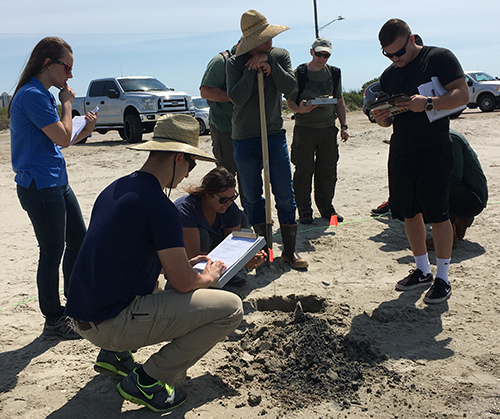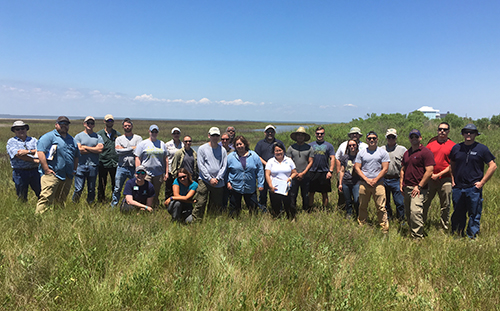Assessing Shoreline Impacts from Oil Spills - Multi-Agency SCAT Training in Texas
MAY 4, 2018 — Some of the critical tasks following an oil discharge are evaluating shoreline impacts and recommending cleanup methods.

Shoreline Cleanup Assessment Technique (SCAT) is a systematic way of assessing and documenting those impacts. SCAT survey teams include a federal representative, a state representative, and often a representative from the land management agency. Having trained personnel available to conduct these surveys is important. Each spring, OR&R and the Texas General Land Office jointly sponsor a SCAT team member training class. This year’s class, held on Galveston Island, Texas, included students from four Coast Guard units in Texas and Southwestern Louisiana, the U.S. Fish and Wildlife Service, Texas General Land Office, Texas Parks and Wildlife Division, Texas Commission on Environmental Quality, Nueces County, the Galveston Park Board, and Texas A&M University Corpus Christi. Students learned the coastal geomorphology and chemistry principles underlying shoreline assessments, conducted surveys on the sand beaches and saltwater marshes, and recommended cleanup methods for those locations. One of the favorite quotes in the spill response community is “the best thing you can bring to a response is someone you already know.” Now, these students know not only SCAT methods and terminology, but they also know and have worked with each other as field teams.
For more information, contact Paige.Doelling@noaa.gov.

